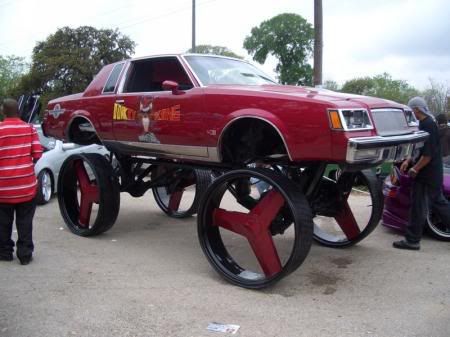-
Posts
14.642 -
Εγγραφή
-
Τελευταία Επίσκεψη
-
Ημέρες που κέρδισε
17
Content Type
Forums
Ειδήσεις
Reviews
Αγγελίες
Blogs
Gallery
Posts posted by RootX
-
-
-
-
Πολύ κρίμα, καλό ταξίδι Σταμάτη.
-
 5
5
-
-
-
-
 2
2
-
-
-
Στα αγγλικά ο οδηγός αλλά πιστεύω καλύπτει και προχωρημένες περιπτώσεις
 Spoiler
SpoilerPre Wash/Snow Foam /De-grease (if doing a claying job)
Wash
Rinse
De-Tar
Rinse
De-Ironise
Rinse
Clay
Polish
Protect
Pre-Clean / Snow Foam
The Aim
To safely remove heavy dirt and grit, which ultimately reduces the chance of swirling. Very effective way of limiting / preventing the possible damage to the cars paintwork, by suspending dirt and grit in a lubricated solution that is easy to wash away. Also to soften any dirt that will not wash away when rinse step is complete.
Products / Accessories
Power Washer
Snowfoam Lance / Pressurised Sprayer
Snowfoam Solution
Pre Clean
APC
De-greaser
Detailing Brushes
Methods
1: Snowfoaming with Lance
2: Pre Clean solution with Pressurised Sprayer
How To
1: Snowfoam Lance
Add snowfoam solution to the lance bottle, topping up with warm water. See note #1
Adjust the air mixture knob and the spray adjust knob to achieve a suitable spray to apply the snowfoam.
Generally, starting at the highest point, spray on a reasonable thick solution of snowfoam, covering the entire car.
Allow to dwell (see section Trims / Shuts / Door Jambs), until the solution has dripped away or it starts showing signs of drying out
Rinse away with pressure washer, avoid direct contact with the paint, until initial heavy dirt is removed.
Give the wheels / arches a gentle blast to remove heavy soiling.
Note #1: If planning to strip back old LSP’s or claying, its no harm to add a moderate mixture or APC to help removal
2. Pre Clean with Pressurised Sprayer
Add Pre Clean solution to bottle and top up with water. Note #1 above applies here also.
Pressurise the bottle and apply to car, concentrating on the lower half of the car where the dirt is heaviest.
Allow to dwell (see section Trims / Shuts / Door Jambs), until the solution has dripped away or it starts showing signs of drying out.
Rinse away with pressure washer, avoid direct contact with the paint, until initial heavy dirt is removed.
Give the wheels / arches a gentle blast to remove heavy soiling.
Wheels & Tyres / Arches
The Aim
To safely remove heavy dirt, grit, tar, iron particles from wheels.
To ensure all surfaces are clean, to give a good surface for any protection to bond, ensuring the product will achieve its full potential.
Products / Accessories
Power Washer
Wheel Cleaner w/ foam head trigger
APC w/ foam head trigger
Tar Remover
De-Ironiser
Wheel Brush
Detailing Brushes
Wheel Brace and Jack required if doing a full-on job! J
Clay (optional)
How To
Give the wheel a gentle blast with the PW to remove the heavy dirt.
Apply wheel cleaner through a foam head trigger (dilution ratio will depend on how heavily soiled the wheels are) and allow to dwell for a few seconds…rinsing with PW and wheel cleaner re-applied, may be necessary.
Apply APC solution to the tyres and arches and allow to dwell.
Using a combination of the wheel brush and detailing brushes, agitate the solution, trying to ensure the brushes get into all the nook and crannies.
Agitate the APC solution on the tyres and arches with a detailing brushes.
Rinse off with PW.
Apply tar remover and allow to dwell – dwell time will vary from product to product.
Rinse off with PW.
Apply de-ironiser and allow to dwell – dwell time will vary from product to product.
Rinse off with PW.
The tar removing and de-ironising steps may need to be repeated.
Using an old piece of clay is an optional step to give the wheels the best clean and surface for any LSPs to bond to.
Trim / Shuts / Door Jambs
The Aim
To remove any dirt that has gathered in the nook and crannies from behind and around; trim, the shuts of the bonnet and boot lid, the door jambs, windows, badges, headlights, tail lights, side indicators, mirrors, vents and grilles, etc
To ensure all surfaces are clean, as it’s the small details that make the difference between a detail and a valet / car wash
Products / Accessories
Power Washer
APC w/ foam head trigger
Detailing Brushes
Microfiber Work Cloths
How To
Spray APC solution onto the affected area and agitate with various sized detailing brushes.
Rinse away with PW.
Open doors, bonnet and boot lid – get into all the tight spaces.
Wipe away excess with Microfiber Cloths or if you are brave, rinse with the PW.
This step can be completed during the Pre-Clean stage. While the snowfoam or pre-cleaner is dwelling on the car, proceed to clean the areas mentioned above. If this step has been completed before, often the snowfoam solution will be enough lubrication needed to gentle agitate the areas.
Washing – The Two Bucket Method (2BM)
The Aim
To clean the paint work of general dirt and grime that is accumulated from day to day driving, including flies and bird etchings.
To limit the potential damage (swirling) to the paint work
Products / Accessories
Two Buckets
Grit Guard
High quality Wash Mitt (Lambswool or Microfiber) – ideally two
Well lubricated Shampoo
How To
Ensure that your Wash Mitt is thoroughly rinsed out and that the buckets are clean and free of any dirt or grit.
Fill two large buckets with fresh water.
At a grit guard to at least one of the buckets, ideally both.
Add shampoo to one of the buckets (if using one grit guard, add it to the bucket without a GG).
One bucket is now your “Rinse Bucket” (fresh water and GG) and the other is the “Wash Bucket” (shampoo and GG).
Dip your Wash Mitt into the Wash Bucket and starting at the roof, wash one half of the roof (a section)
Once you have finished a section, rinse out your Wash Mitt in the Rinse Bucket. Then dip it into the Wash Bucket, collecting clean water and shampoo. This ensures that any potentially harmful grit that has been picked up by the wash mitt, is now in the Rinse Bucket. The Girt Guard, ensures that each time you rinse your wash mitt, you don’t pick up harmful grit that you have previously wash out. This is down to two reasons. Firstly the GG prevents you dipping the wash mitt to the bottom of the bucket where the grit is, and re-contaminating your wash mitt. Secondly as the GG is sectioned, it prevents grit being lifted from the bottom of the bucket by the whirlpool that is created when you rinse out your wash mitt.
Continue this process of washing one section (a panel) from highest to lowest, rinsing the mitt in the rinse bucket, then dipping it into the wash bucket, and washing a section. It is advisable to use one mitt for the top of half of the car (least dirty and most obvious place to notice swirls) and a second for the lower half (below the rub trim level).
Once all panels have been clean, give the whole car a good rinse down with the PW, ensure that all the trim and shuts are free from shampoo and perhaps snowfoam also.
Paint Prep including De-Tarring, De-Ironising and Claying
The Aim
To decontaminate the paint work of bonded contaminants (microscopic), accumulated from subjected to many miles of driving and general environmental surroundings that regular washing wont remove; including tar, iron particles, over-spray, tree spa, light paint or rubber/plastic transfer, etc
To give the best surface for LSP to bond to, ensuring good appearance and durability of the product.
Products / Accessories
Power Washer
Tar Remover
De-Ironiser
Clay & Lubricant
How To
Apply tar remover to affected areas, being careful around plastic / rubber trim.
Allow to dwell and rinse off with PW. Repeat if necessary. Ideally you should not have to touch the tar, but sometimes a light wipe may be necessary.
Apply the de-ironiser.
Allow to dwell. Shortly after application the solution, in places, will turn purple and begin to bleed; these areas are affected by iron particles. Spreading with a sponge or clean microfiber is OK as the paintwork should be free of any dirt or grit that could be dragged across the paint resulting in damage.
Allow to dwell and rinse off with PW. Repeat if necessary.
At this point the paint work should be free of any potentially damaging contamination resulting from claying.
Knead the clay into a manageable flat section
Starting at the roof, spray on a generous amount of lubricant to an approximate 1ft * 1ft section. Gently rub the clay back and forth on the paint work. At first the clay will not slide smoothly over the paint work (as its contaminated). Continued moving the clay back and forth and after a few seconds the clay will slide much freer, more like its on ice. At this point that section of paintwork has been de-contaminated and another section can be started, not forgetting to use plenty of lubricant. If you come across a section that the clay is very grabby on, be sure to use more lubricant and less pressure on the clay, and eventually it will slide freely.
Once all the paintwork has been clayed, the whole car should be re-washed and dried. NOW, your paintwork is clean!!
Up to this point is considered “preparation”; and the paintwork is prepared for any or all of the following steps…
Polishing (hand or machine)
Glazing
LSP
Polishing (by hand)
The Aim
To remove oxidisation
Add depth to the paint and gloss to the paint
Remove / hide light swirling
Products / Accessories
Polish
Applicator Pad
High quality Buffing Microfiber Cloth
How To
Prime the applicator with a generous amount of polish.
Apply to the paintwork with reasonable pressure, working it in various directions, try to apply it evenly.
When the spread of the product appears to be diminishing, apply a small amount to the applicator and continue.
Allow the polish to dry to a haze and buff of with a high quality buffing microfiber cloth. Depending on the polish, it may be best to apply one or two panels at a time and then buffing off, before continuing with other panels.
Depending on the desired finish, multiple stages may be required
Glazing
The Aim
To add a glossy wet look to the paint
To hide light swirling
Products / Accessories
Glaze
Applicator Pad
High quality Buffing Microfiber Cloth
How To
Same as hand polishing...
Prime the applicator with a generous amount of glaze.
Apply to the paintwork with reasonable pressure, working it in various directions, try to apply it evenly.
When the spread of the product appears to be diminishing, apply a small amount to the applicator and continue.
Allow the glaze to dry to a haze and buff of with a high quality buffing microfiber cloth. Depending on the glaze, it may be best to apply one or two panels at a time and then buffing off, before continuing with other panels.
Usually one coat of glaze is enough...maximum two!
Glazing usually diminishes the effectiveness of the LSP... you will probably find that you are very disappointed in the performance of the LSP, this is down to the fact that the glaze is preventing a good bond. Durability suffers for the wet look.
LSP (Last Stage Protection) – Wax / Sealant / Nano Technology
The Aim
To protect the paint work.
To add a glossy wet look to the paint
Beading
Products / Accessories
LSP of choice
Applicator Pad / Applicator Microfiber Cloth
High quality Buffing Microfiber Cloth
How To
Much the same as hand polishing and glazing...
Prime the applicator with a generous amount of LSP.
Apply to the paintwork with reasonable pressure, working it in various directions, try to apply it evenly. The secret to easy applying and removal of LSP is to keep to applying thin coats, but multiple times – its much better for durability and easy on / easy off than applying one very thick coat.
When the spread of the product appears to be diminishing, apply a small amount to the applicator and continue.
Allow the LSP to dry to a haze and buff of with a high quality buffing microfiber cloth. Depending on the LSP, it may be best to apply one or two panels at a time and then buffing off, before continuing with other panels.
The more coats applied the better...minimum two, too ensure full coverage and durability. Applying more coats usually results in a deeper and glossier shine, so advantages are twofold with durability.-
 3
3
-
-
-
Λίγο prog να πάει καλά η μέρα
 13 hours ago, Billys said:
13 hours ago, Billys said:Και στα καπάκια :):)
-
 4
4
-
-
- Δημοφιλής Δημοσίευση
- Δημοφιλής Δημοσίευση
Αυτό μου ήρθε στο μυαλό μόλις είδα την φώτο lol

-
 11
11
-
-
-
-
Doomάτο!
-
 1
1
-
-
Έβλεπα American Horror Story και 'κόλλησα' με την διασκευή
-
 2
2
-
-
-
-

An outback at the back of an outback at the back of an outback

-
 7
7
-
-
-
-
-
 1
1
-
-
-
Εδώ πάντως, η διαφορά τιμής μεταξύ πετρελαίου και βενζίνης είναι μικρότερη από Ελλάδα (1€ με 1.30€). Παρόλα αυτά, κανείς δεν προτείνει πετρέλαιο αν δεν κάνεις πάνω από 20.000χλμ το χρόνο. Εγώ δεν είμαι γνώστης, αλλά σε forums, στη δουλειά και γενικά σε συζητήσεις, παίζει το ίδιο "hype". Δεν ξέρω το σκεπτικό τους.
Το σκεπτικό(στην Ιρλανδία) προκύπτει από τις τιμές των μεταχειρισμένων diesel και ειδικά των μετά '08 όπου λόγω χαμηλού motor tax και κατανάλωσης, παραμένουν υψηλότερες από αυτές των αντίστοιχων βενζινοκίνητων.
Παράδειγμα: σήμερα το passat diesel του 2010 κοστίζει 2000 ευρώ παραπάνω από το αντίστοιχο βενζινοκίνητο. Οι καταναλώσεις ας υποθέσουμε ότι είναι 5lt/100km και 7.5lt/100km αντίστοιχα, άρα το diesel καίει 5 ευρώ λιγότερα ανά 100km.
Εάν κάνεις 10.000km το χρόνο, δεν έχει νόημα να δώσεις τα 2000 παραπάνω για το diesel μιας και το όφελος θα το δεις μετά από 4 χρόνια - άσε που το 2019/20 θα έχουν υποτιμηθεί και τα 2 σε τέτοιο βαθμό που ουσιαστικά μέσα μπήκες εάν πήρες το diesel.
Εάν κάνεις 30.000km τον χρόνο όμως αξίζει, διότι μετά από 1.5 περίπου χρόνο θα ξοδεύεις λιγότερα σε καύσιμα.
-
 4
4
-
-




 troll
troll 



Τι mp3 ακούτε αυτή τη στιγμή; v2.0 (MusicLab)
In Off topic